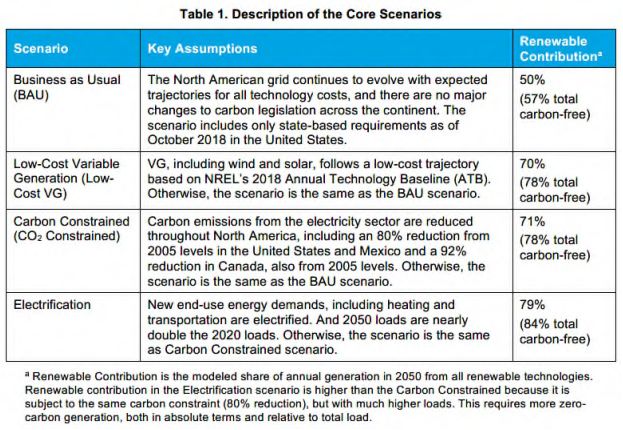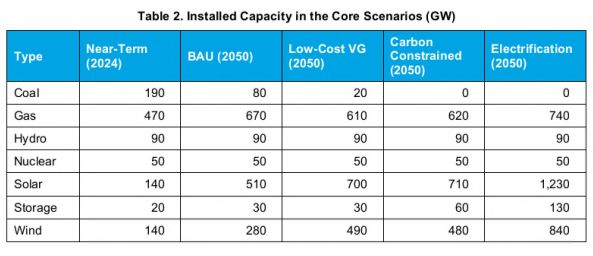The North American Renewable Integration Study (NARIS) assesses opportunities to modernize and decarbonize the North American power system through the integrated planning and operation of generation and transmission infrastructures to meet end-use demand.
On June 24, 2021, the US Department of Energy (DOE) and Natural Resources Canada (NRCan) announced the release of the US Perspective Report and the Canadian Perspective Report as part of the latest NARIS study.
In the study's summary, the DOE and NRCan state:
"The North American electric power system is undergoing significant change, with renewable resources now contributing more generation than ever before. This transformation is poised to continue given decreasing technology costs and ambitious decarbonization goals at the federal, state, local, corporate, and consumer levels. The North American Renewable Integration Study (NARIS) aims to inform grid planners, utilities, industry, policymakers, and other stakeholders about challenges and opportunities for continental system integration of large amounts of wind, solar, and hydropower to support a low-carbon future grid."
Key highlights of the latest NARIS study include:
- There are multiple combinations of electricity generation, transmission and demand that can result in 80-percent carbon reduction by 2050.
- The future low-carbon system can balance supply and demand across a wide range of future conditions, with all generation and storage technologies contributing to resource adequacy.
- Operational flexibility comes from transmission, electricity storage and flexible operation of all generator types, including hydropower, wind, solar and thermal generation.
- While carbon targets can be achieved with conservative assumptions about the cost of wind and solar, steeper cost reduction of these technologies can lead to a faster and less costly transition to a low-carbon electricity grid.
- Regional and international cooperation on electricity transmission, as envisioned by the study, can provide significant net system economic benefits through 2050.
Launched in 2016, NARIS evaluates four scenarios for North American power systems through 2050, focusing on the effects of various renewable technology cost trajectories, emission constraints, demand growth and outcomes.
The four scenarios are shown in the table below from the summary:

The installed generation in each of the core scenarios is shown in the following table from the summary:

Visit us at mayerbrown.com
Mayer Brown is a global legal services provider comprising legal practices that are separate entities (the "Mayer Brown Practices"). The Mayer Brown Practices are: Mayer Brown LLP and Mayer Brown Europe - Brussels LLP, both limited liability partnerships established in Illinois USA; Mayer Brown International LLP, a limited liability partnership incorporated in England and Wales (authorized and regulated by the Solicitors Regulation Authority and registered in England and Wales number OC 303359); Mayer Brown, a SELAS established in France; Mayer Brown JSM, a Hong Kong partnership and its associated entities in Asia; and Tauil & Chequer Advogados, a Brazilian law partnership with which Mayer Brown is associated. "Mayer Brown" and the Mayer Brown logo are the trademarks of the Mayer Brown Practices in their respective jurisdictions.
© Copyright 2020. The Mayer Brown Practices. All rights reserved.
This Mayer Brown article provides information and comments on legal issues and developments of interest. The foregoing is not a comprehensive treatment of the subject matter covered and is not intended to provide legal advice. Readers should seek specific legal advice before taking any action with respect to the matters discussed herein.
